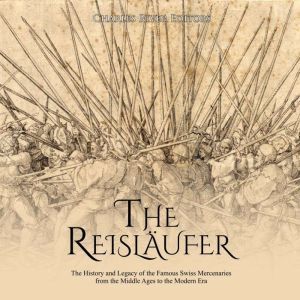
List: $6.95
| Sale: $4.87
Club: $3.47
The Reislaufer: The History and Legacy of the Famous Swiss Mercenaries from the Middle Ages to the Modern Era
Author: Charles River Editors
Narrator: Daniel Houle
Unabridged: 1 hr 59 min
Format: Digital Audiobook Download
Publisher: Charles River Editors
Published: 11/24/2020
Category: History - Military - Medieval
Synopsis
In 1291, three cantons around Lake Lucerne—Schwyz, Uri, and Unterwalden—formed the so-called “Everlasting League” to counter outside aggression. This became the nucleus of what would develop into the Swiss Confederacy, and eventually the nation of Switzerland. Gradually, more and more cantons would join, ending their constant, low-level infighting and making the land more secure for trade. By the beginning of the 16th century, the Swiss Confederacy was comprised of 13 cantons, and this voluntary unification, without threats or conquest, was remarkable for the time. It was helped by the fact that the Swiss had a roughly similar culture, and that the region, with its ring of protective mountains, made the advantages of unification against a hostile outer world obvious to all. Few powers dared try to enter Swiss territory, and they generally met with disaster when they did, but ironically, this led to a new problem. The Swiss villages had always been prone to fighting and raiding one another, maintaining a constant low-level warfare that made the Swiss good fighters, and hotheaded young men wanted a chance to fight. At the same time, other areas, especially Italy, saw a growing need for mercenaries. Constantly trying to take land from their neighbors, Italian city-states were hampered by the fact that most of their men were busy tilling fields, engaging in trade and crafts, or building the cities and monuments that would become the wonders of the Renaissance. Moreover, the cutthroat politics of the city-states were such that rulers could not trust their own officers, who might murder them and take over their positions, something that happened on numerous occasions.